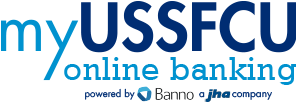IRA Rollovers: When, Why, and How to Do It Right
Published: April 18, 2025

Changing jobs? Retiring? Or simply looking for more control over your retirement savings? An IRA rollover might be the right move—and understanding how it works can help you avoid costly mistakes.
Whether you're moving funds from a 401(k) or consolidating old retirement accounts, here's what you need to know to roll over your retirement savings the smart way.
What Is an IRA Rollover?
An IRA rollover allows you to move funds from one retirement account—like a 401(k), 403(b), or another IRA—into a new or existing Individual Retirement Account (IRA) without paying taxes or early withdrawal penalties, as long as the transfer follows IRS guidelines.
When Should You Consider a Rollover?
Here are a few common scenarios where a rollover makes sense:
- You’ve changed jobs and want to take control of your old employer-sponsored retirement plan.
- You’re retiring and want to simplify your finances by consolidating accounts.
- You want more investment options than what your current plan offers.
- You’re looking to reduce fees or gain better service by moving to a financial institution that meets your needs.
Types of IRA Rollovers
1. Direct Rollover
This is the most recommended method. The money moves directly from your old plan to your IRA—no taxes withheld, no risk of penalties.
2. Indirect Rollover
You receive a check and must deposit the full amount into your IRA within 60 days. If any taxes were withheld, you’ll need to make up the difference out of pocket to avoid penalties.
Avoiding Common Mistakes
- Mind the 60-day rule. Missing the deadline could trigger taxes and penalties.
- Only one indirect rollover per 12 months is allowed between IRAs.
- Watch out for mandatory withholdings on indirect rollovers—usually 20% is withheld.
- Don’t roll over Required Minimum Distributions (RMDs)—these are not eligible.
Why Rollover Into an IRA at USSFCU?
When you roll your retirement funds into an IRA with USSFCU, you get:
- Personalized guidance from our IRA Team
- Access to IRA Certificates and other low-risk investment options
- No setup or maintenance fees
- Consolidation of your retirement assets for easier management
Ready to Take the Next Step?
Rolling over your retirement account doesn’t have to be overwhelming. We’re here to help you do it right.
-
Visit ussfcu.org/iras to explore your options
-
Or email our team at [email protected]
This article is for informational purposes only and should not be considered tax, legal, or financial advice. Individual circumstances vary, and you should consult a qualified tax advisor, financial planner, or legal professional to determine what options are best for your specific situation. While we strive to provide accurate and up-to-date information, laws and regulations may change, and we do not guarantee the completeness or accuracy of the content. USSFCU and its representatives do not provide tax or legal advice. Always review your retirement and investment plans with a professional before making any financial decisions.



